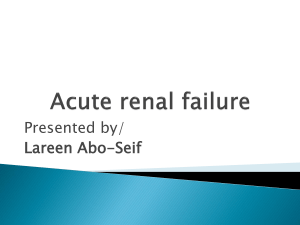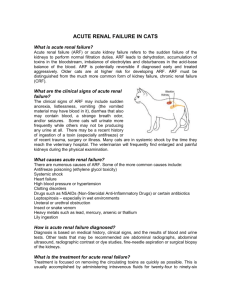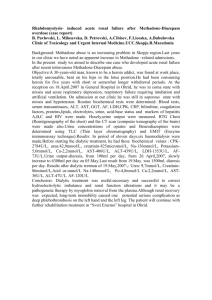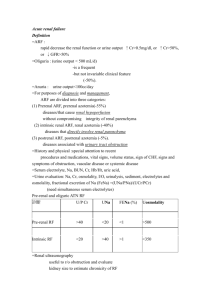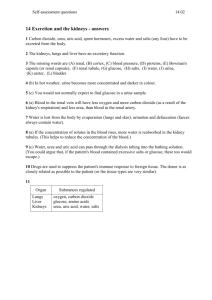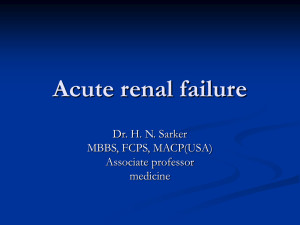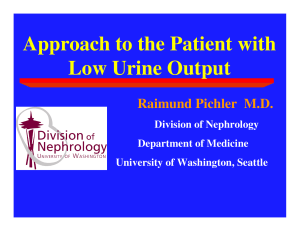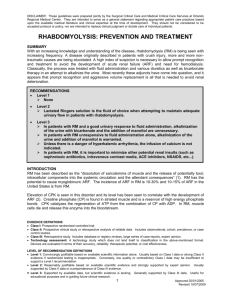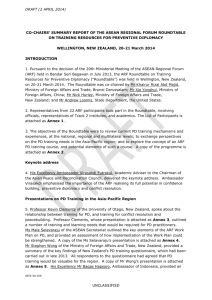Evolution of examination methods in nephrology Akpowhe Roberts
advertisement
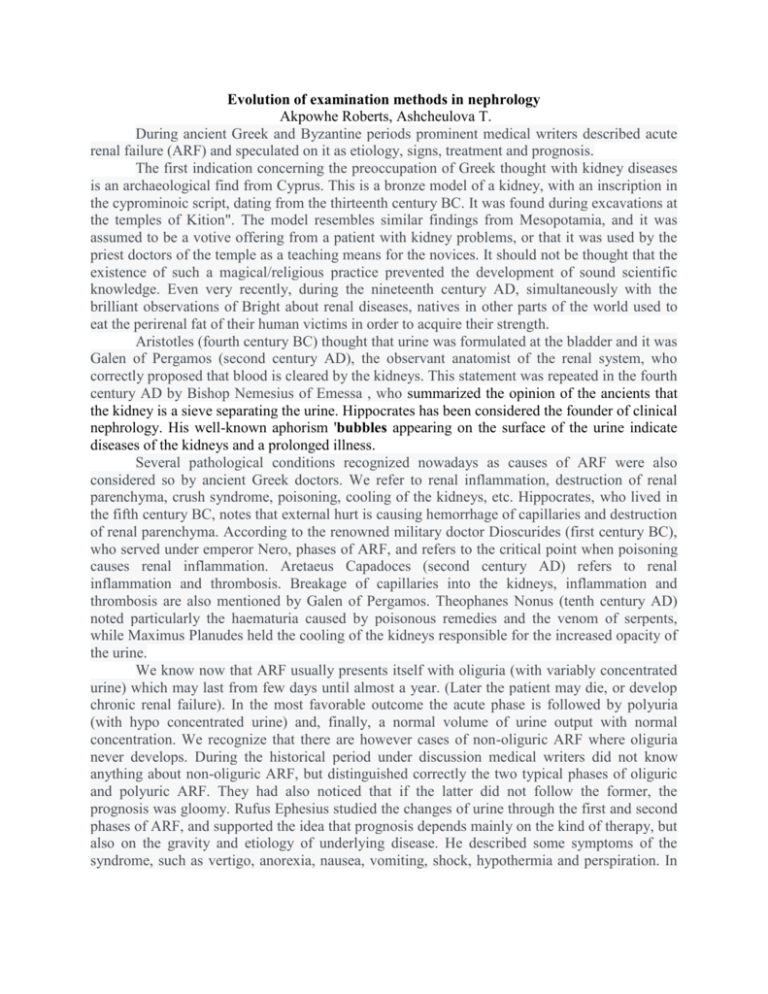
Evolution of examination methods in nephrology Akpowhe Roberts, Ashcheulova T. During ancient Greek and Byzantine periods prominent medical writers described acute renal failure (ARF) and speculated on it as etiology, signs, treatment and prognosis. The first indication concerning the preoccupation of Greek thought with kidney diseases is an archaeological find from Cyprus. This is a bronze model of a kidney, with an inscription in the cyprominoic script, dating from the thirteenth century BC. It was found during excavations at the temples of Kition". The model resembles similar findings from Mesopotamia, and it was assumed to be a votive offering from a patient with kidney problems, or that it was used by the priest doctors of the temple as a teaching means for the novices. It should not be thought that the existence of such a magical/religious practice prevented the development of sound scientific knowledge. Even very recently, during the nineteenth century AD, simultaneously with the brilliant observations of Bright about renal diseases, natives in other parts of the world used to eat the perirenal fat of their human victims in order to acquire their strength. Aristotles (fourth century BC) thought that urine was formulated at the bladder and it was Galen of Pergamos (second century AD), the observant anatomist of the renal system, who correctly proposed that blood is cleared by the kidneys. This statement was repeated in the fourth century AD by Bishop Nemesius of Emessa , who summarized the opinion of the ancients that the kidney is a sieve separating the urine. Hippocrates has been considered the founder of clinical nephrology. His well-known aphorism 'bubbles appearing on the surface of the urine indicate diseases of the kidneys and a prolonged illness. Several pathological conditions recognized nowadays as causes of ARF were also considered so by ancient Greek doctors. We refer to renal inflammation, destruction of renal parenchyma, crush syndrome, poisoning, cooling of the kidneys, etc. Hippocrates, who lived in the fifth century BC, notes that external hurt is causing hemorrhage of capillaries and destruction of renal parenchyma. According to the renowned military doctor Dioscurides (first century BC), who served under emperor Nero, phases of ARF, and refers to the critical point when poisoning causes renal inflammation. Aretaeus Capadoces (second century AD) refers to renal inflammation and thrombosis. Breakage of capillaries into the kidneys, inflammation and thrombosis are also mentioned by Galen of Pergamos. Theophanes Nonus (tenth century AD) noted particularly the haematuria caused by poisonous remedies and the venom of serpents, while Maximus Planudes held the cooling of the kidneys responsible for the increased opacity of the urine. We know now that ARF usually presents itself with oliguria (with variably concentrated urine) which may last from few days until almost a year. (Later the patient may die, or develop chronic renal failure). In the most favorable outcome the acute phase is followed by polyuria (with hypo concentrated urine) and, finally, a normal volume of urine output with normal concentration. We recognize that there are however cases of non-oliguric ARF where oliguria never develops. During the historical period under discussion medical writers did not know anything about non-oliguric ARF, but distinguished correctly the two typical phases of oliguric and polyuric ARF. They had also noticed that if the latter did not follow the former, the prognosis was gloomy. Rufus Ephesius studied the changes of urine through the first and second phases of ARF, and supported the idea that prognosis depends mainly on the kind of therapy, but also on the gravity and etiology of underlying disease. He described some symptoms of the syndrome, such as vertigo, anorexia, nausea, vomiting, shock, hypothermia and perspiration. In the same century Aretaeus Capadoces noted the small and irregular pulse, the paleness and coma characteristic of severe cases, and rightly associated prolonged anuria with death. Aetius Amidenus, author of the Tetrabiblion, is the Byzantine medical writer who had been most influenced by Rufus Ephesius' ideas about natural history and prognosis of ARF. He described the increase of both urine volume and concentration in parallel with the patient's recovery and thought that the etiology, and the kind of treatment, influences the outcome of the illness. Paul of Aegina (seventh century AD), describes the oliguria of ARF noting that 'little urine is passed'. Byzantine doctors generally were deeply involved in observations about urine volume, colour, smell and concentration in several renal dysfunctions. This uroscopy was undertaken by doctors of all specialties, but also by specialists called 'technicians'

